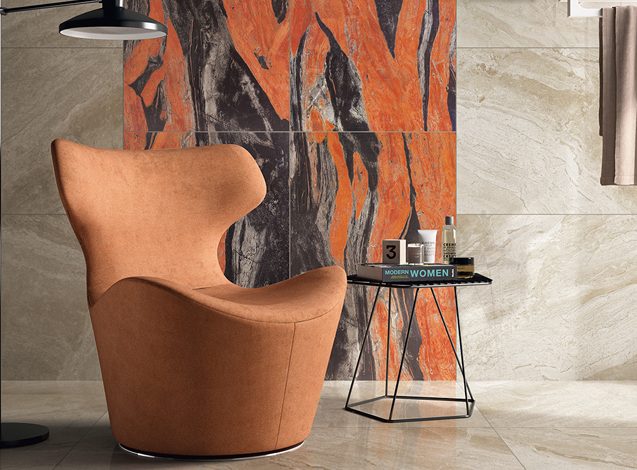Everything You Need to Know About Tiles in Brief

These are not merely thin plates or matt floor tiles parts used to cover surfaces; rather, tiles are regarded as the major element in bringing building interior and exterior finishing to give your house a magnificent and elegant touch.
Application of Tiles
A certain kind of tile must be used in building construction depending on the type of surface to be covered. If you’re planning a visit to a tile showroom in London, the following list will assist you in learning about the many types of tiles available based on their intended application.
- Wall Tiles
- Flooring Tiles
- Partition Tiles
- Roofing Tiles
The tiles are made of earthenware, which is a kind of baking process. It is made in a manner similar to that of brick. Both wall and floor tiles are used on the inside and outside of the structure for decorative or aesthetic purposes. These are classified as ceramics and are referred to as whitewares. Wall and floor tiles are available in both glazed and unglazed varieties.
Textured floor tiles are also created to enhance the beauty and movement of the flooring. However, it is susceptible to increased load, pressure, and other adverse material behaviour. As a result, these tiles are more robust, abrasion resistant, water resistant, and easier to clean.
Different Types of Tiles You Need to Know
Tiles are an excellent investment since they raise the value of your house and maintain their aesthetic appeal for many years after they are installed. Material options for tiles include terrazzo and quartz as well as metal and terra cotta. The following is a list of the many kinds of tiles that may be used in building construction:
Marble Tiles
Marble contains minerals that are used to manufacture marble tiles, which are very durable. Adding these tiles to your property instantly adds sophistication, value, and elegance. These are prone to scratches and stains in addition to being expensive. Shower floors, columns, and backsplashes are just a few of the places where marble tiles may be found as ornamental accents.
Cement Tiles
Mineral pigments, cement, and a suitable mould with a hydraulic press are used to make cement tiles. Porous and adaptable, they let you create stunning patterns and hues. Durability is an advantage of cement-based flooring. Bathrooms are not the only places where they may be utilised. They’re also a popular option for outdoor entertaining areas.
Ceramic Tiles
Using cooling and heating procedures, these tiles are crafted from clay and natural minerals. Porcelain and non-porcelain ceramic tiles are the two main varieties. As a result of its durability and suitability for intensive use, these tiles are the most frequent form of flooring in the house Any area in the home, from the kitchen to the bathroom to a swimming pool to the outside of the house, may benefit from ceramic tiles.
Porcelain Tiles
These tiles are made by heating refined clay to a higher temperature, which results in . This is a top-notch product in terms of durability, design, and overall value. In terms of water absorption, porcelain tiles have a rate of less than 0.5 per cent. High-traffic areas and kitchen backsplashes might benefit from porcelain tile.
Granite Tiles
Magma or lava cools down and solidifies to become granite, a natural stone that looks and feels like marble. The tiny surface particles make it easy to tell them apart. Buildings, bridges, pavements, monuments, and many other outside constructions may benefit from this material. Granite is a great option for kitchen tiles fitting and other high-traffic areas since it is resistant to scratches once polished.
Travertine Tiles
As a result of hot springs, travertine tiles are believed to be a kind of limestone. A distinct design and character emerge from the combination of minerals inside. Air bubbles and organic materials matt floor tiles contribute to the formation of pits and rough surfaces. Indoors and outside, they may be utilised for walks, pool decks, and toilets.
Mosaic Tiles
Materials such as stone, glass, and ceramic are the most typically utilised for mosaic tiles. Laying down a large number of these smaller tiles produces an impressive visual effect. Walls, floors, furniture, outdoor décor, and art may all benefit from this versatile material.
Tiles Installation is Simple and Maintaining A Breeze
A sealant (if required) may make tile maintenance a breeze for most varieties of tile requiring little to no work at all. Using high-quality grout prevents water from seeping under the tile and causing serious damage. It’s also simple to fix tiling, which is another benefit. Any broken or warped tile may be quickly and easily replaced, whether it’s in the shower or the backsplash. The replacement procedure might be sped up if you have an additional carton of tiles in stock.
Conclusion
Tiles may be found in a variety of colours, sizes, and materials. One of the most diversified ornamental components, tile may come in a wide range of colours and styles, from crisp whites to sage greens with a linen-textured finish. Ceramic tile for flooring and matt floor tiles walls is here to stay, making it ideal for high-traffic areas like kitchens and bathrooms.However, don’t believe that your tile selections are confined to floors or the bathroom or kitchen alone: you may install tile in every area of your house, from creating an artistic subway tile background in the front entryway to encircling an elaborate mirror with metallic-sheen ceramic backsplash tiles. The possibilities for using the many sorts of tiles are only limited by your inventiveness.




